Possible Periorbital Vascular Complications From Injectables
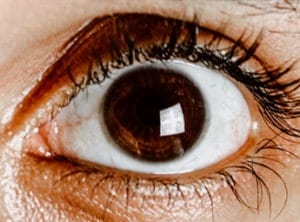
Vascular occlusion and filler blindness are always concern hot spots for injectors, especially early on in their career. There is, however, a range of possible periorbital vascular complications from injectables that all aesthetics professionals should be aware of.
A new Korean study has identified a spectrum of these potential complications after the injection of cosmetic filler or local anaesthetic.
This single‐centre retrospective research was carried out by a team from the Department of Ophthalmology at Asan Medical Center in Seoul’s University of Ulsan College of Medicine. It was published in the Journal of Cosmetic Dermatology on 21 February 2021. Continues below…
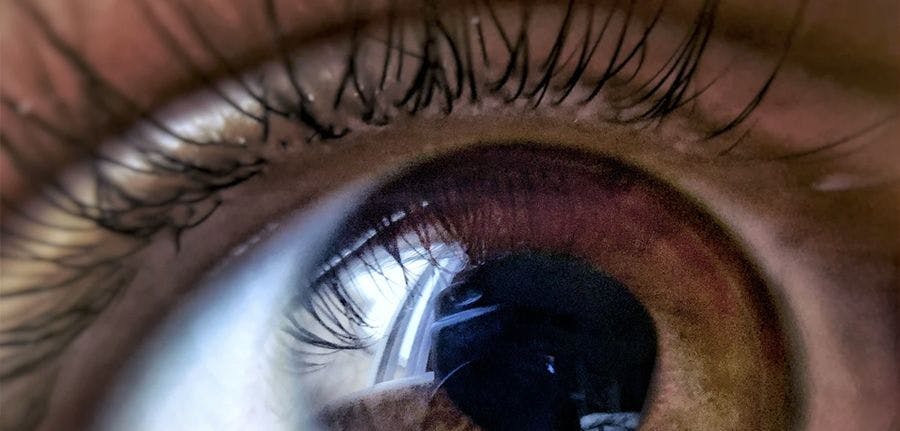
Exploring 10 patients with occluded periorbital vessels
Researchers considered the occluded periorbital vessels of 10 consecutive post-facial injection patients, making this a small-scale study.
In it, the injectables administered included:
– A mix of lidocaine and epinephrine = 1 patient
– Hyaluronic acid dermal fillers = 7 patients
– Collagen cosmetic filler = 1 patient
– Poly-L-lactic acid soft tissue filler = 1 patient.
The injection sites were, the:
– Glabellar = 5 patients
– Nasal dorsum = 4 patients
– Temporal fossa = 1 patient.
Arteries presumed to be affected were recorded as:
– Central = 2 patients
– Branch = 3 patients
– Retinal, ophthalmic = 4 patients
– Angular = 1 patient.
The complications experienced were:
– Purpura and blisters = 9 patients (all recovered within 3 months)
– Ophthalmoplegia = 8 patients (all recovered within 3 months)
– Blindness = 6 patients (all remained blind at the time of the last follow-up)
– Occlusion of the central retinal artery or ophthalmic artery = 5 of the 6 patients who reported blindness
– Sequelae of phthisis bulbi = 1 patient (managed cosmetically using retrobulbar filler injections).
Glabellar is a high risk area for injectables
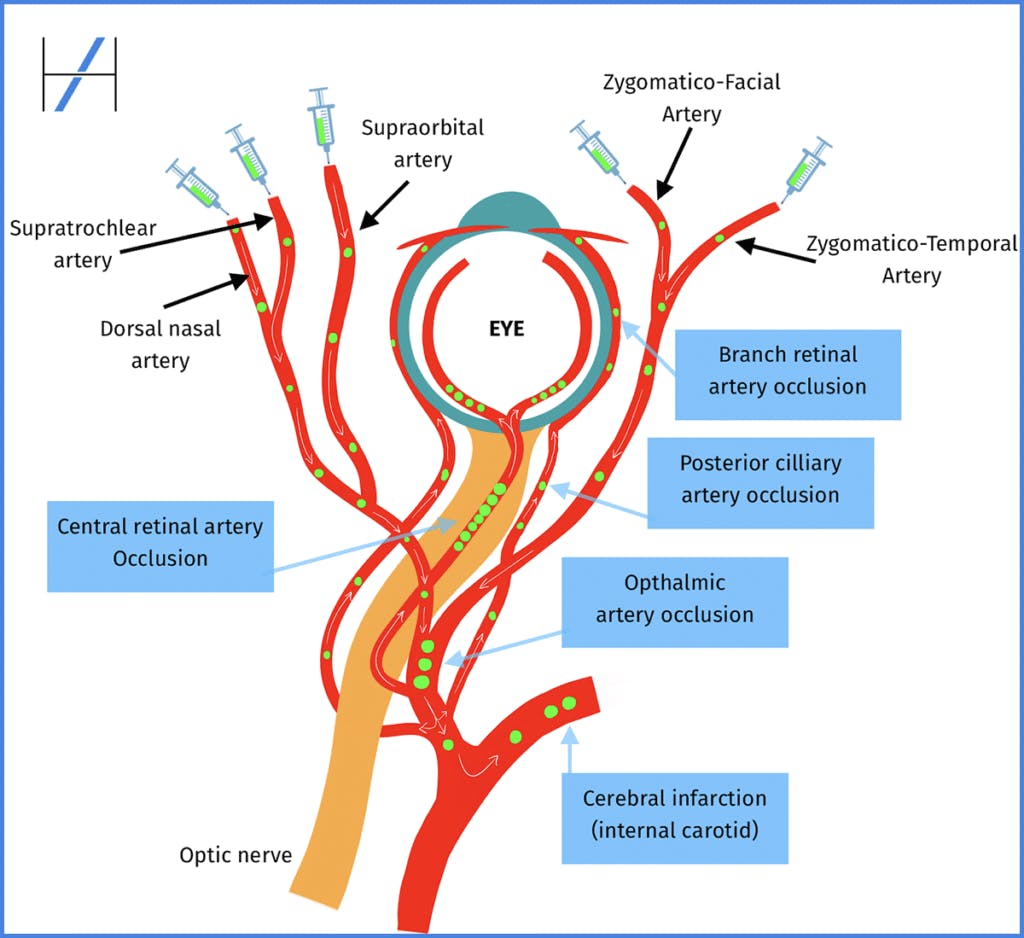
Diagram showing the mechanism of blindness from filler
Study authors Ko‐Eun Lee, Gye‐Jung Kim and Ho‐Seok Sa concluded that:
“Facial injections can cause periorbital arterial occlusion and the clinical features are diverse according to the site and extent of vascular occlusion and injection materials. Visual prognosis was associated with the site of vascular occlusion and initial visual acuity. Other common complications, such as skin lesions, blepharoptosis and limited extraocular movement, can fully resolve only with supportive treatments in most cases.”
Harley Academy Creative Director and aesthetics specialist, Dr Marcus Mehta notes, “This research highlights the fact that the glabellar is a high risk area for filler injection. This is largely due to its close proximity to the anastomosis between the external and internal carotid circulation.”
While this information may be alarming to those just starting their aesthetic medicine careers, it is simply a reminder of the importance of proper training. In order to be a safe and effective injector, it is crucial to gain a thorough understanding of facial anatomy as well as injection techniques.
Preventing and managing dermal filler complications
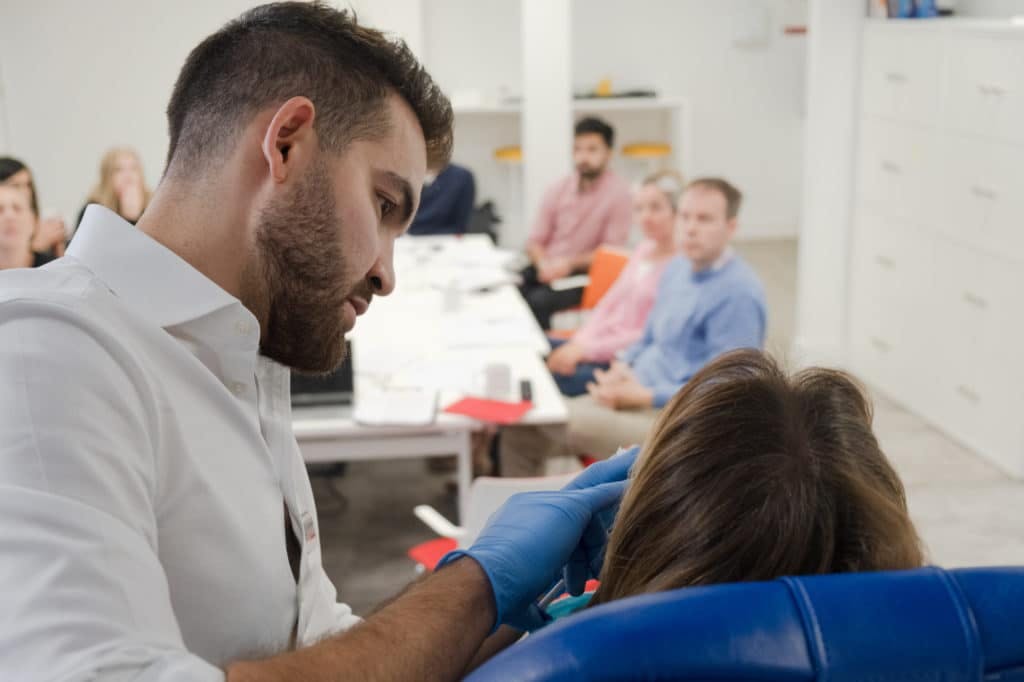
Although they can happen to aesthetics professionals at any stage of their career, inexperienced injectors are considered more likely to encounter complications.
As Harley Academy’s Medical Director, Dr Emily Mehta advises, “Start with a good breadth of base knowledge before you start broadening your experience. Everyone wants to jump straight into injecting and I do think that some subjects, such as product science, facial anatomy, the ageing process and complications, are not studied in enough detail. Some may even be overlooked completely.
For example, you need to know your product science – you need to know what it is, what it does and how it’s going to behave. Is it the right product for the right person, in the right area? You need to know how ageing affects the facial anatomy and its effects on your treatment planning.
Then, of course, you need to know what complications could occur, how to prevent them and – if they do occur – what to do to manage them. Once this knowledge is firmly in place, then it’s time to start building up practical skills.”
Increase your knowledge
There are various ways to increase your knowledge in this area if you’re a registered doctor, dentist, nurse or midwife.
Studying for a Level 7 Diploma in Botox & Dermal Fillers will provide in-depth theory and practical sessions equivalent to Master’s degree level; this is the highest standard of aesthetic medicine education available in the UK.
Taking an eLearning course in Preventing and Managing Dermal Filler Complications will give you a thorough grounding in theory and allow you to study at your own pace – perfect for those who are short on time. This is also a great refresher and reference tool for more experienced injectors who are keen to stay up to date with their professional knowledge.
How do you get your confidence up?
One-to-one learning, where hands-on sessions are conducted by a dedicated and experienced expert injector, is a great investment in your confidence and your career. This type of meticulous, in-person practice provides the ultimate opportunity to have your work overseen and your questions answered.
Sometimes you just need that extra bit of support to set you on the right track and that’s exactly what our 1:1 Injectables Training Sessions were designed to do.
Essentially, the roadmap for preventing and managing dermal filler complications starts with gathering a broad knowledge base including facial anatomy and product science, then expanding your skills as an injector and building your confidence. If you feel like you need some additional expert guidance, know that this is easily accessible but if you’re unsure which path is right for you, our Courses team is always happy to talk it through with you.
All information correct at the time of publication. Article last fact-checked: 20 January 2023
Download our full prospectus
Browse all our injectables, dermal fillers and cosmetic dermatology courses in one document
By submitting this form, you agree to receive marketing about our products, events, promotions and exclusive content. Consent is not a condition of purchase, and no purchase is necessary. Message frequency varies. View our Privacy Policy and Terms & Conditions
Attend our FREE open evening
If you're not sure which course is right for you, let us help
Join us online or in-person at our free open evening to learn more
Our Partners









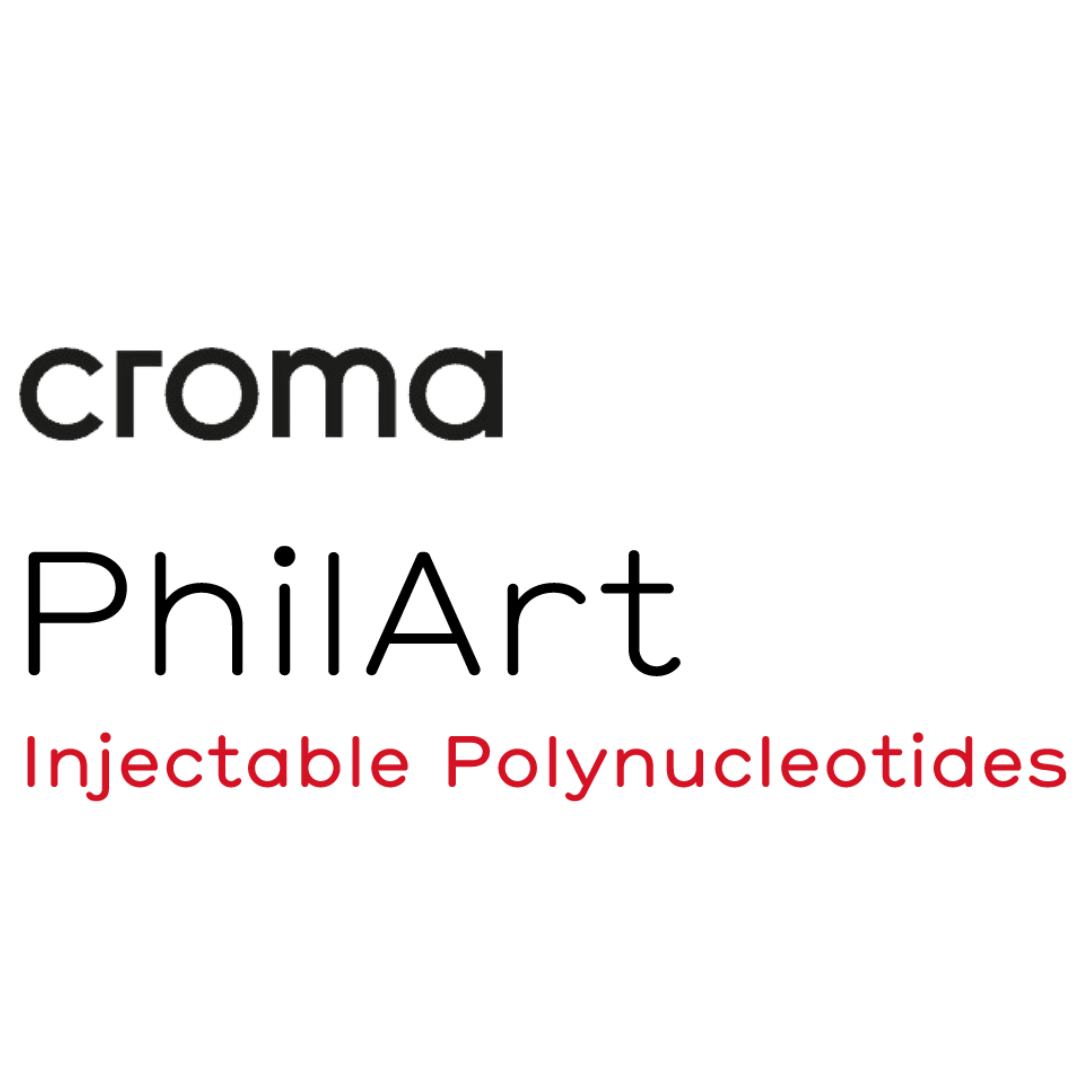
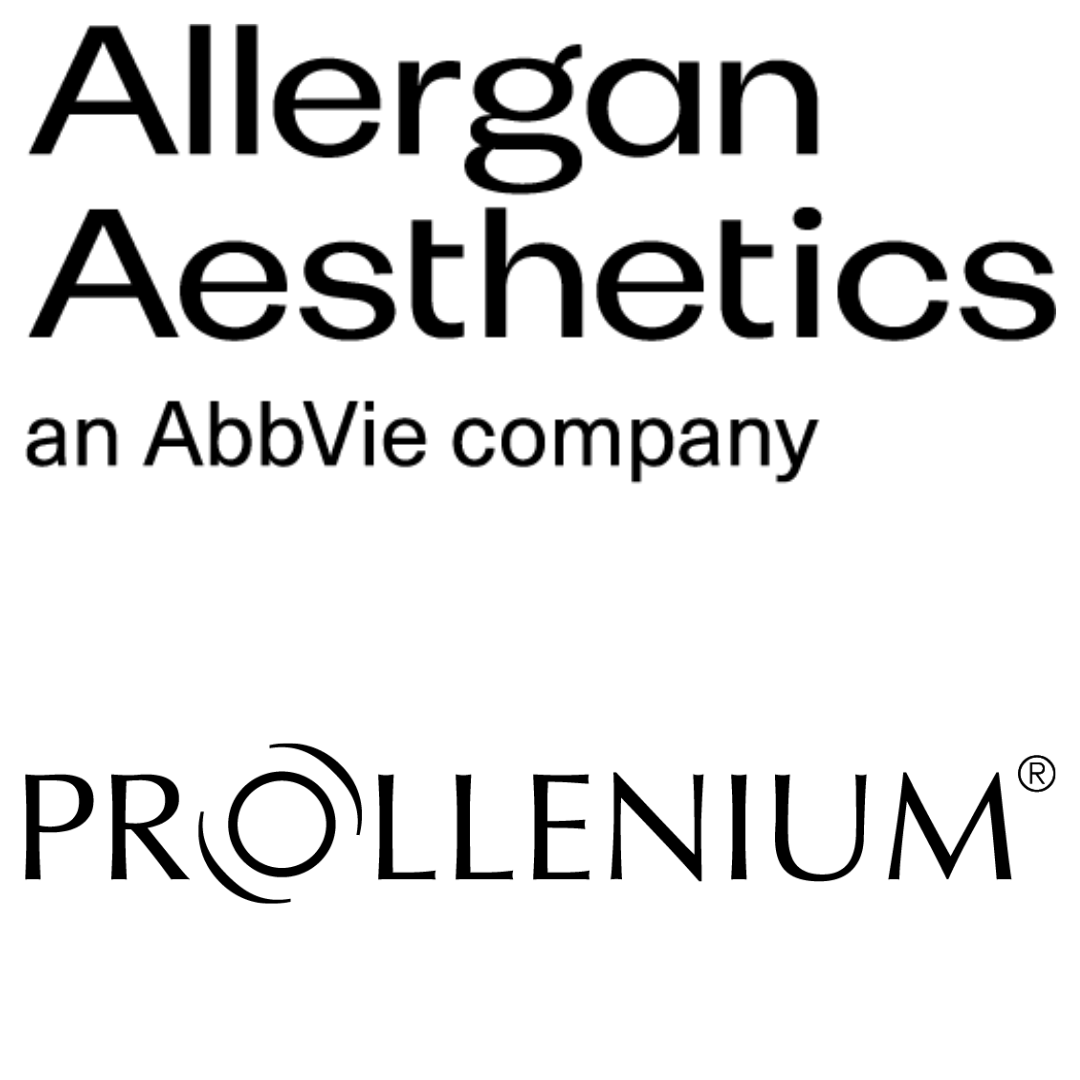

STAY INFORMED
Sign up to receive industry news, careers advice, special offers and information on Harley Academy courses and services

